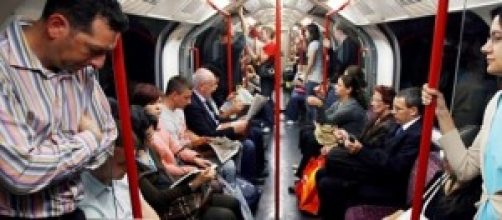Despite being part of everyday life, subway remains anambiguous space, both familiar and disturbing, anonymous and distinctive, crowdedyet isolating. Anyone who has been on a public transport should be very familiarwith this eerie experience of collective solitude. The daily rituals that commutersperform are very specific, similar to strict rules: stay as far away to otherpeople as possible, don’t smile, don’t make eye contact. Most importantly, never talk to anyone.
That is the public transport etiquette. But what if therules are wrong?
According to a 2004 study published in the journal Science, commutingis associated with fewer positive emotions than any other daily activity.
Fromnoise- cancelling headphones to more spacious sitting, governments are trying tomake commutes slightly more bearable.
But again, what if the main problem lies inthe total lack of human contact? What if research shows that to routinelyignore each other is not good for us?
A study conducted by researchers theUniversity of Chicago Booth School of Business has recently found that talkingto strangers increases one’s well-being to a great extent. Nicholas Epley andJuliana Schroder, authors of the experiment, recruited over 100 Chicagocommuters and asked them to start a conversation with a stranger. Theprofessors then compared their experience with that of those who sat alone insilence.
The result?
Talking to a stranger was a positive experience for most and it did notaffect productivity. “This research broadly suggests that people could improvetheir own momentary well-being — and that of others,” Epley says.
Funnily enough, all participants instead thoughtthat their ride would have been more pleasant and their day more productive ifthey sat on their own.
The opposite is actually the case: sittingor standing in solitude is not the antidote to the dreaded daily commute. Instead,this total lack of communication is the inherent frustrationand paradox of the subway, of a space which is, as French anthropologist Augé’ssuggested, “both everywhere and nowhere”. A “non space”, where we are all alonein a crowd.

